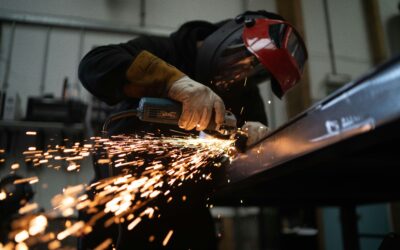With wildfires becoming more frequent in more regions of the US, the health hazards of working outdoors in smoky air is at issue for hundreds of thousands of workers—not just those fighting the fires—and workers don’t have to be that close to the fire to be affected. Wildfires are not only more frequent than ever, they are more severe and more toxic.
Farm workers in wildfire-prone areas face particular risks that come with agricultural work. The work they’re performing usually can’t be postponed, and it is physically demanding work.
Your agricultural clients have tough decisions to make when it comes to protecting their employees from wildfire smoke—the health effects aren’t fully understood; knowing when it’s safe to work is largely a judgement call; and the growing number of regulations don’t offer much clarity in making that judgement.
What wildfire smoke can do to farm workers
Researchers and public health professionals don’t fully understand the hazardous effects of wildfire smoke because of its complexity. Now that more wildfires are taking man-made structures with them, their smoke is made up of many different types and amounts of potentially toxic compounds. Wildfire smoke also changes quickly depending on the environment—and weather and the type of vegetation burning make a big difference as well.
“A unique dilemma for agricultural workers during times of poor air quality is that they often live in congregate housing provided by farm labor employers,” said Elaine Bruce, Technical Underwriting Specialist for Foresight. “Housing of this type may not have adequate air filters and/or air conditioning that you would see in many American homes. The typical farm worker does not have the ability to return to good indoor air quality after spending several hours a day working in smoky conditions.”
Even though the CDC acknowledges the limited amount of information on exactly how wildfire smoke can affect an outdoor worker’s health, there has been a large amount of research on how exposure to wildfire smoke affects the health of the general public. Based on that research, it’s clear that exposure leads to adverse health outcomes such as:
- Eye irritation, sore throat, wheeze, and cough
- Asthma and chronic obstructive pulmonary disease (COPD) exacerbations
- Bronchitis and pneumonia
- Adverse birth outcomes
- Cardiovascular (heart and blood vessel) outcomes
Health hazards vary from person to person based on age, overall health conditions (pre-existing heart or lung disease), the amount of time they’re exposed and the type of work they’re performing. Heavier breathing in more physically demanding work such as farm labor also makes a difference.
How much is too much? What the regulators say
Wildfire smoke contains chemicals, gases, and fine particles. The greatest health hazards from the smoke comes from breathing the fine particles in the air. The smallest and most harmful particulate matter found in smoky air is called PM2.5, which means the solid particles and liquid droplets suspended in the air have an aerodynamic diameter of 2.5 micrometers or smaller.
In 2019 California’s Division of Occupational Safety and Health (Cal/OSHA) enacted an emergency regulation requiring employers to take measures to protect workers from wildfire smoke when the Air Quality Index(AQI) reaches 151 or greater and where the employer “should reasonably anticipate that employees may be exposed to wildfire smoke.”
One of the measures the California code requires is for employers to provide N-95 masks or other NIOSH-approved respirators to employees. In late September, California passed Assembly Bill 73, which included farm and agricultural workers in the definition of essential workers and gave them access to the state’s PPE stockpile.
Washington became the second state to file emergency rules to protect outdoor workers exposed to wildfire smoke. Like the California code, Washington requires employers to identify harmful smoke exposure and notify workers. Both states require employees to properly communicate and train employees on wildfire hazards, encourage them to report symptoms and seek medical care, and take actions to reduce or eliminate exposure whenever possible.
How employers can navigate hazy directives
“When analyzing the hazards and exposures for these vulnerable employees underwriters like to see employers taking positive and proactive measures to provide their employees access to indoor areas with filtered air, and living conditions that provide a respite from smoke,” said Bruce.
While agricultural employers are acutely aware of the environment around their farms, few if any are air quality experts. A 2018 study by; the University of California, Davis, found that while growers and employers were concerned about the effects of poor air quality on their workers, many had no clear plans for measuring air quality or managing workers when conditions were bad.
Farm workers themselves must be willing to take extra precautions to protect themselves while working in smoky air. The same UC Davis study also found that when farmworkers were offered protective masks, many weren’t using them due to heat-related discomfort and chafing.
Here are some steps that can help employers do a better job of protecting employees from wildfire smoke:
- Check local news frequently for health warnings about air quality and check the EPA’s US Fire and Smoke Map, the U.S. Forest Service, or your local air pollution control district
- Provide masks for employees and make sure they’re using them correctly (bandanas and scarves will not provide adequate protection) and following OSHA’s respiratory protection standard
- Have a system for communicating wildfire smoke hazards that’s understandable to employees and provides a way for them to report wildfire smoke hazards without fear of reprisal
- Change location of work or work schedules if possible
- Reduce levels of physical activity if possible, especially strenuous or heavy work
- Encourage frequent breaks in areas free from smoke—provide an indoor facility with filtered air if possible
Like wildfire smoke, this problem will linger
Agricultural employers in the Western U.S. will be dealing with the problems of wildfire smoke longer than usual—whereas wildfire season used to subside substantially by October, now it lasts through December.
The wildfire statistics in the U.S. are alarming: From January 1 through September 19, 2021, there were 45,118 wildfires, compared with 43,556 in the same period in 2020. What used to be considered mainly a “California problem” is now spreading through the U.S.—12 states reported 73 large fires.
Many of these states are growing the food for America’s tables, and your agriculture clients operating under this escalating threat need help keeping their workers safe from smoke hazards. Partner with a safety-focused insurance company like Foresight that can help clear the air with sound guidance and support.
“Often overlooked, farm workers are essential and are tasked with feeding the entire state. It is incumbent upon employers and regulatory agencies to set procedures that protect California farm workers,” said Bruce.



